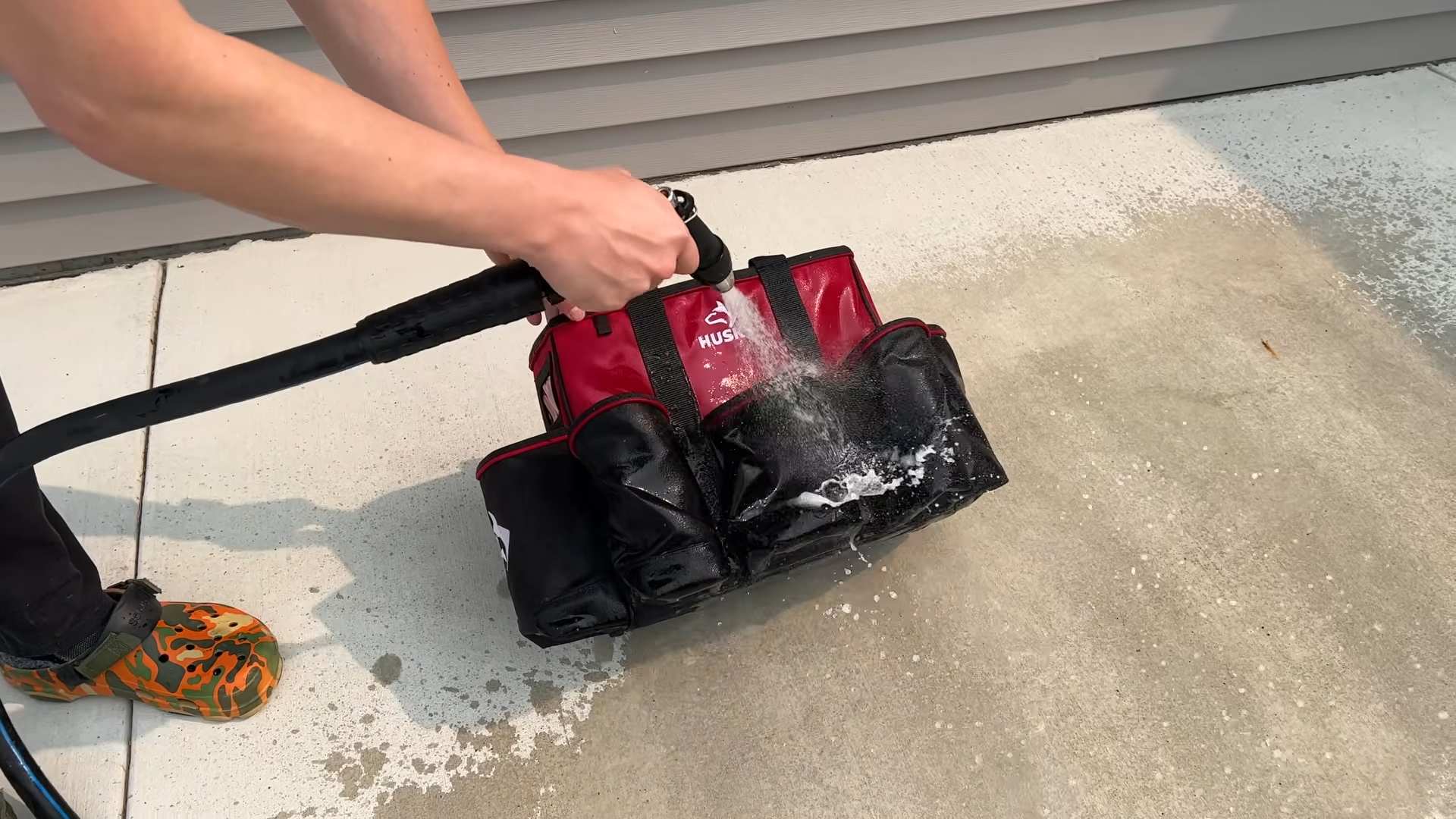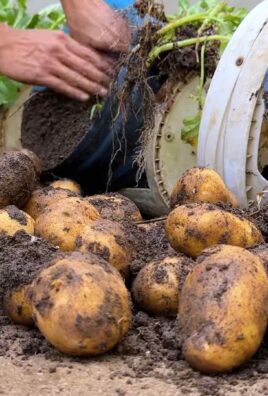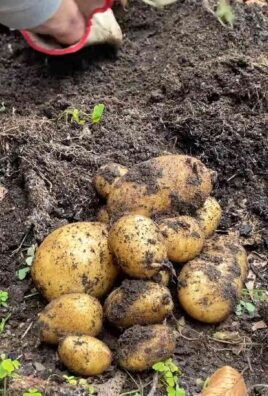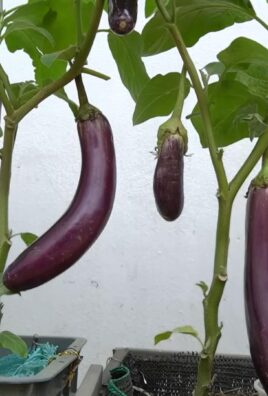Grow Spring Radishes and unlock the secrets to a vibrant, early harvest right in your own backyard! Imagine biting into a crisp, peppery radish, bursting with flavor, just weeks after planting. Sounds amazing, right? For centuries, radishes have been a staple in gardens worldwide, from ancient Egypt where they were a common food, to modern-day kitchen gardens. Their quick growth and minimal space requirements make them a perfect choice for beginners and seasoned gardeners alike.
But let’s be honest, sometimes getting those perfect radishes can be a little tricky. Maybe they’re too small, too spicy, or bolt before you even get a chance to enjoy them. That’s where these DIY tricks and hacks come in! I’m going to share my tried-and-true methods for ensuring a bountiful crop of delicious spring radishes.
In this article, you’ll discover simple, yet effective techniques to optimize your soil, watering schedule, and even pest control, all designed to help you grow spring radishes that are the envy of your neighborhood. Forget those bland, store-bought radishes – with these tips, you’ll be enjoying fresh, flavorful radishes straight from your garden in no time. So, grab your gardening gloves, and let’s get started!

Grow Your Own Spring Radishes: A Beginner’s Guide
Okay, so you want to grow radishes? Awesome! They’re one of the fastest and easiest veggies to cultivate, perfect for impatient gardeners like myself. Plus, that peppery bite is just fantastic in salads or as a crunchy snack. This guide will walk you through everything you need to know to get a bumper crop of spring radishes.
What You’ll Need
Before we get our hands dirty, let’s gather our supplies. Here’s a checklist:
* Radish Seeds: Choose a variety that suits your taste. ‘Cherry Belle’ is a classic, but there are also French Breakfast, Watermelon Radish, and many more!
* Well-Draining Soil: Radishes don’t like soggy feet. Amend your soil with compost or other organic matter if needed.
* Gardening Gloves: To keep your hands clean and protected.
* Hand Trowel or Garden Fork: For preparing the soil and planting.
* Watering Can or Hose: For keeping the soil consistently moist.
* Row Covers (Optional): To protect against pests and extend the growing season.
* Fertilizer (Optional): A balanced fertilizer can give your radishes a boost.
Choosing the Right Spot
Radishes are pretty adaptable, but they do have some preferences:
* Sunlight: They need at least 6 hours of sunlight per day. More is better!
* Soil: Loose, well-draining soil is crucial. Compacted soil will result in misshapen radishes.
* Temperature: Radishes prefer cool weather. Aim for temperatures between 50°F and 65°F (10°C and 18°C).
Planting Your Radish Seeds
This is where the magic happens! Follow these steps for successful planting:
1. Prepare the Soil: Use your hand trowel or garden fork to loosen the soil to a depth of about 6 inches. Remove any rocks, weeds, or debris. Incorporate compost or other organic matter to improve drainage and fertility.
2. Create Rows: Make shallow furrows in the soil, about ½ inch deep and 1 inch apart. You can use the edge of your trowel or your finger to create these furrows.
3. Sow the Seeds: Sprinkle the radish seeds evenly along the furrows. Don’t overcrowd them! Aim for about ½ inch spacing between seeds.
4. Cover the Seeds: Gently cover the seeds with a thin layer of soil.
5. Water Thoroughly: Use your watering can or hose to water the soil gently but thoroughly. The soil should be moist but not soggy.
6. Label Your Rows: It’s always a good idea to label your rows with the date and variety of radish you planted. This will help you keep track of your progress.
Caring for Your Radishes
Radishes are relatively low-maintenance, but here are a few things to keep in mind:
* Watering: Keep the soil consistently moist, especially during dry spells. Radishes need plenty of water to develop properly.
* Thinning: Once the seedlings emerge, thin them to about 1 inch apart. This will give them enough space to grow. You can eat the thinnings as microgreens!
* Weeding: Keep the area around your radishes free of weeds. Weeds compete for nutrients and water.
* Fertilizing (Optional): If your soil is poor, you can fertilize your radishes with a balanced fertilizer. Follow the instructions on the fertilizer package.
* Pest Control: Radishes are generally pest-resistant, but flea beetles can sometimes be a problem. Row covers can help protect against flea beetles. You can also use insecticidal soap if necessary.
Harvesting Your Radishes
This is the best part! Radishes are ready to harvest in as little as 3-4 weeks.
1. Check for Size: Radishes are typically ready to harvest when they are about 1 inch in diameter. You can gently brush away the soil around the radish to check its size.
2. Pull Them Up: Grasp the radish leaves near the base of the plant and gently pull the radish out of the ground. If the soil is dry, you may need to loosen it with a trowel first.
3. Wash and Store: Wash the radishes thoroughly to remove any dirt. Trim off the leaves, leaving about ½ inch of stem. Store the radishes in a plastic bag in the refrigerator. They will keep for about a week.
Troubleshooting
Even with the best planning, things can sometimes go wrong. Here are a few common radish problems and how to fix them:
* Radishes are too small: This could be due to overcrowding, lack of water, or poor soil. Thin your radishes, water them regularly, and amend the soil with compost.
* Radishes are cracked: This is usually caused by inconsistent watering. Keep the soil consistently moist.
* Radishes are too spicy: This can be due to hot weather or letting the radishes grow too large. Harvest your radishes when they are young and tender.
* Radishes are woody: This is usually caused by letting the radishes grow too large. Harvest your radishes when they are young and tender.
* Flea beetles are eating my radishes: Use row covers to protect your radishes from flea beetles. You can also use insecticidal soap if necessary.
Extending Your Radish Season
Want to enjoy radishes for longer? Here are a few tips:
* Succession Planting: Plant a new batch of radish seeds every 1-2 weeks. This will ensure a continuous harvest.
* Choose Different Varieties: Some radish varieties are more heat-tolerant than others. Choose varieties that are suitable for your climate.
* Use Row Covers: Row covers can help protect your radishes from frost and extend the growing season.
* Plant in the Fall: Radishes can also be planted in the fall for a winter harvest in mild climates.
Radish Varieties to Try
There are so many radish varieties to choose from! Here are a few of my favorites:
* Cherry Belle: A classic red radish with a mild flavor.
* French Breakfast: An elongated red and white radish with a crisp texture.
* Watermelon Radish: A large radish with a green exterior and a bright pink interior.
* Easter Egg Radish: A mix of red, pink, purple, and white radishes.
* Black Spanish Radish: A large black radish with a pungent flavor.
Radish Recipes
Now that you have a bumper crop of radishes, what are you going to do with them? Here are a few ideas:
* Radish Salad: Slice radishes thinly and toss them with lettuce, cucumber, and a vinaigrette dressing.
* Radish and Butter Sandwiches: Spread butter on slices of bread and top with thinly sliced radishes and a sprinkle of sea salt.
* Roasted Radishes: Toss radishes with olive oil, salt, and pepper and roast them in the oven until tender.
* Radish Greens Pesto: Use radish greens to make a pesto. It’s a great way to use the whole plant!
* Pickled Radishes: Pickle radishes for a tangy and crunchy snack.
Section: Soil Preparation – The Foundation for Success
Getting the soil right is half the battle. Radishes need loose, well-draining soil to develop properly. If your soil is heavy clay, it’s going to be tough for those little radishes to push through.
1. Test Your Soil: A simple soil test can tell you the pH and nutrient levels of your soil. Radishes prefer a slightly acidic soil with a pH of 6.0 to 6.8.
2. Amend the Soil: If your soil is heavy clay, amend it with compost, peat moss, or other organic matter. This will improve drainage and aeration. If your soil is sandy, amend it with compost to help it retain moisture.
3. Remove Rocks and Debris: Radishes need a smooth, obstacle-free growing environment. Remove any rocks, roots, or other debris from the soil.
4. Loosen the Soil: Use a garden fork or tiller to loosen the soil to a depth of at least 6 inches. This will make it easier for the radish roots to penetrate the soil.
5. Rake the Soil: Rake the soil smooth to create a level planting surface.
Section: Watering Strategies for Plump Radishes
Consistent watering is key to plump, juicy radishes. Inconsistent watering can lead to cracked or woody radishes.
1. Water Deeply: Water your radishes deeply whenever the top inch of soil feels dry to the

Conclusion
So, there you have it! Growing spring radishes at home, using this simple DIY trick, is not just a fun gardening project; it’s a gateway to fresher, tastier, and more vibrant salads and snacks. Forget those bland, store-bought radishes that lack that peppery punch. With minimal effort and maximum reward, you can cultivate a bounty of crisp, flavorful radishes right in your own backyard, balcony, or even on a sunny windowsill.
Why is this DIY method a must-try? Because it simplifies the process, making it accessible to even the most novice gardener. It eliminates the guesswork, ensuring a higher success rate and a more abundant harvest. Plus, it’s incredibly satisfying to nurture something from seed to table, knowing exactly where your food comes from and how it was grown.
But don’t stop there! Experiment with different varieties of spring radishes. Try French Breakfast radishes for their mild flavor and elongated shape, or Cherry Belle radishes for their classic roundness and vibrant red color. You can even explore heirloom varieties for unique flavors and textures. Consider companion planting your radishes with carrots or lettuce, as they benefit each other’s growth. Another variation is to succession plant, sowing seeds every week or two, to ensure a continuous harvest throughout the spring season. You can also try growing them in containers if you have limited space. Just make sure the container is deep enough to accommodate the radish roots.
Beyond the basic recipe, think about how you can incorporate your homegrown radishes into your culinary creations. Slice them thinly and add them to salads for a peppery kick. Roast them with olive oil and herbs for a surprisingly sweet and savory side dish. Pickle them for a tangy and refreshing condiment. Or simply enjoy them raw with a sprinkle of sea salt. The possibilities are endless!
We wholeheartedly encourage you to give this DIY trick a try. It’s a rewarding experience that will connect you with nature, enhance your culinary skills, and provide you with a delicious and healthy harvest. And most importantly, don’t forget to share your experience with us! We’d love to hear about your successes, your challenges, and your creative ways of using your homegrown spring radishes. Post pictures of your radish harvest on social media, tag us, and let us know what you think. Your feedback will help us improve this guide and inspire others to embark on their own radish-growing adventures. Happy gardening!
Frequently Asked Questions (FAQ)
What is the best time to plant spring radishes?
The ideal time to plant spring radishes is in early spring, as soon as the soil can be worked. This is typically 4-6 weeks before the last expected frost. Radishes prefer cool weather and will bolt (go to seed) in hot temperatures, so timing is crucial for a successful harvest. In warmer climates, you can also plant them in the fall for a winter harvest.
How much sunlight do radishes need?
Radishes need at least 6 hours of sunlight per day to thrive. While they can tolerate partial shade, especially in hotter climates, insufficient sunlight can result in smaller, less flavorful radishes. Choose a location that receives plenty of direct sunlight for optimal growth.
What kind of soil is best for growing radishes?
Radishes prefer loose, well-drained soil that is rich in organic matter. Heavy clay soil can hinder root development and result in misshapen radishes. Amend heavy soil with compost or other organic matter to improve drainage and aeration. A slightly acidic to neutral soil pH (6.0-7.0) is ideal.
How often should I water my radishes?
Radishes need consistent moisture to grow quickly and develop crisp, tender roots. Water deeply and regularly, especially during dry periods. Aim to keep the soil consistently moist but not waterlogged. Irregular watering can cause the radishes to split or become tough.
How long does it take for radishes to mature?
One of the great things about radishes is their quick growth rate. Most varieties mature in just 3-4 weeks from planting. This makes them a perfect crop for impatient gardeners or those looking for a quick harvest. Check the seed packet for specific maturity times for the variety you are growing.
Why are my radishes all tops and no roots?
There are several reasons why radishes might produce abundant foliage but small or underdeveloped roots. Common causes include:
* **Overcrowding:** Thin seedlings to ensure adequate spacing between plants.
* **Insufficient Sunlight:** Radishes need at least 6 hours of sunlight per day.
* **Poor Soil:** Heavy or compacted soil can hinder root development.
* **High Nitrogen Levels:** Excessive nitrogen in the soil can promote leafy growth at the expense of root development. Avoid using fertilizers that are high in nitrogen.
* **Hot Weather:** Radishes prefer cool weather and may bolt in hot temperatures, resulting in poor root development.
How do I prevent radishes from splitting?
Radish splitting is usually caused by inconsistent watering. When the soil dries out and then is suddenly saturated with water, the radishes can absorb water too quickly, causing them to split. To prevent splitting, water regularly and consistently, especially during dry periods. Mulching around the plants can also help to retain moisture in the soil.
Can I eat radish greens?
Yes, radish greens are edible and nutritious! They have a peppery flavor similar to the roots and can be used in salads, stir-fries, or soups. Choose young, tender greens for the best flavor. Avoid eating greens from radishes that have been treated with pesticides.
How do I store radishes after harvesting?
To store radishes, remove the greens and wash the roots thoroughly. Place the radishes in a plastic bag or container with a damp paper towel and store them in the refrigerator. They should keep for up to 1-2 weeks.
What are some common pests and diseases that affect radishes?
Radishes are generally pest-resistant, but some common pests include flea beetles, root maggots, and aphids. Flea beetles can be controlled with row covers or insecticidal soap. Root maggots can be prevented by using floating row covers or by practicing crop rotation. Aphids can be washed off with a strong stream of water or treated with insecticidal soap. Common diseases include damping-off and white rust. Damping-off can be prevented by using well-drained soil and avoiding overwatering. White rust can be treated with a fungicide.
Can I grow radishes in containers?
Yes, radishes are well-suited for container gardening. Choose a container that is at least 6 inches deep and has drainage holes. Use a well-draining potting mix and water regularly. Place the container in a sunny location that receives at least 6 hours of sunlight per day.
How do I know when radishes are ready to harvest?
Radishes are typically ready to harvest when they reach about 1 inch in diameter. Gently loosen the soil around the radish and pull it out of the ground. If the radish is too small, leave it in the ground for a few more days.
What is succession planting and how can I use it with radishes?
Succession planting is the practice of planting crops in intervals to ensure a continuous harvest. With radishes, you can sow seeds every week or two to have a steady supply of fresh radishes throughout the spring season. This is especially useful since radishes mature quickly.
Are there any companion plants that benefit radishes?
Yes, radishes benefit from being planted alongside certain companion plants. Carrots, lettuce, spinach, and peas are all good companions for radishes. They can help to deter pests, improve soil health, or provide shade. Avoid planting radishes near hyssop, as it can inhibit their growth.





Leave a Comment